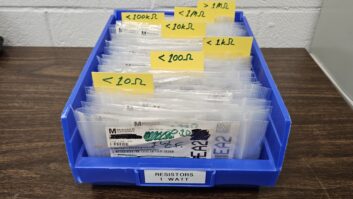You may have seen him on the PBS kid show “Between the Lions.” You might have heard him making strange noises and playing one of the cartoon weasels in the 1988 feature “Who Framed Roger Rabbit?”
But more likely, you would recognize Fred Newman in his capacity as the traveling sound effects man on Garrison Keillor’s “A Prairie Home Companion,” which airs on almost 600 stations and is distributed by American Public Media.
When I spoke with Newman on the phone, he exuded the excitement of a kid putting on a show for the family, only a lot funnier.
(click thumbnail)Fred NewmanDuring our conversation he peppered his comments with gunshots, explosions, animals choking and other even more unlikely effects, all created spontaneously using only his mouth. Listening to Newman is like changing the TV channel every three seconds.
Let me start with a technical question. What kind of microphone do you prefer?
Well, that’s not so important because once the sound leaves my mouth it is someone else’s responsibility. When I’m doing live shows like “Prairie Home,” I trust Sam Hudson, the mixer and technical director. He has great ears. All I need is accurate monitoring. When I’m doing footsteps or NASCAR effects, usually Garrison is talking in his whisper so I have to take that into consideration and adjust what I do.
Last week we were doing a Civil War sketch and I had to create bugles, swords (using silverware), horses and artillery sounds. I had to slip them under and around Garrison’s voice.
My associate, Tom Keith, has been with Garrison for 30 years, and he is more of an old-time radio sound effects guy. I come from a tradition of storytellers and I’m more interested in that.
How much of what you do on “Prairie Home” is ad lib?
There is a basic script but things change.
I remember I was set to use a prop door to make a rusty hinge noise, but just before the show Garrison asked me to make the sound with my mouth instead. He wanted it to be more organic.
Radio is so much more intimate than TV. Garrison’s voice is one inch from your eardrum. In fact, the only person who talks that closely to you is maybe your lover, someone you’re in bed with. Our show is so close-mic’d that you can hear Garrison’s nose hairs as he breathes.
The show is kind of slow-paced so we can tell our stories and let imaginary images form in your mind. Most shows today are cut up and jump-cut all over the place.
Can you give me an example of the ad libs?
Garrison came up to me and asked [imitating Keillor’s voice], “Can you come up with the sound of a man having his back cracked by a chiropractor?” This request came five minutes before air.
I thought about all the things in my world backstage that I could use to make that sound but none of them were quite right. You have to feel that noise internally.
(click thumbnail)Fred Newman, Tim Russell, Sue Scott and Garrison Keillor, from left, work the mics.I grabbed one of those ribbed water bottles and put some water in it. I then put some tape over the outside so it wouldn’t crackle and wrapped it in a towel. When my cue came I just twisted it and everyone in the audience groaned and twisted in their seats. It was a great feeling.
When did you start with the show?
I first came on stage in 1980 to promote the original version of my book, “Mouth Sounds.” [The book has been rewritten and is now available as a book/CD and CD-ROM.] I went out on stage and did this baby voice and played a harmonica, and Garrison was so cool and he just went with it.
Over the years he would call me to come on and do special shows with Tom Keith. In fact I thought about having Tom Keith “taken out,” you know, kind of a Tonya Harding job. One quick chop to the throat would do it and I could have the job all to myself.
You jest.
I do. We’re actually good friends. I’ve been with the show on a regular basis for about eight years. Tom has expert timing and uses props to great effect.
Can you tell me a little more about working with Garrison Keillor?
One can’t know how brilliant he is without seeing him work, and he’s been doing it for 33 years. He is so facile with words that the show becomes one big piece of word jazz. It’s moving, changing all the time. The show is almost never what we practiced during the rundown.
Your bio says that you worked with Jim Henson of Muppets fame.
True. I was writing material for his characters, Dr. Bunsen Honeydew and his assistant, Beaker. I also was doing some puppeteering, but I could never quite get the hand/mouth thing coordinated.
One day Henson said to me, in a very nice way (imitating Henson’s voice), “You do great voices but you’re a lousy puppeteer,” and he was right.
I played a young Jim Henson on camera in a CBS pilot called “Puppetman” and worked with Jim right up until his death.
I see you do voice mimicry as well!
To duplicate someone’s voice is all about listening, getting the voice in your head first. I love grabbing an aspect or a vocal tick but I’m really more interested in creating characters than doing impressions. I can’t really nail them like (Prairie Home voice man) Tim Russell.
I worked for a year on the “CBS Morning Show” and came up with a 300-pound home economist, sort of a trailer park Martha Stewart voice. She was based on women I heard when I was growing up.
It seems like you would be a natural for cartoons.
I did a lot of cartoons when I was in California. I’m the one the movie guys call when they get stuck. There’s usually some soundman trying to cut something together on a computer and he realizes he needs it to sound more organic.
One time I got a phone call at 9 a.m. and it was someone from Warner Bros. He said [in character] “I’m working on a Nicole Kidman movie and we need the sound of a frog swallowing a wedding band and then throwing it up. Can you do that?” I gave him an instant audition on the phone and he said [in character again], “Uh, can you be here at 10:30?”
Who were some of your idols?
Certainly Mel Blanc.
The first movie I worked on was “Gremlins,” directed by Joe Dante. And it also was the first time anyone had access to the Warner Bros. cartoon library of sound effects.
Joe wanted a specific classic sound, the sound of a duck being caught by the throat (making the noise perfectly), but we didn’t know what it was called so we couldn’t look it up on the file cards they had. I had to recreate it.
Later an old sound effects guy heard it and told us it was called “trombone garble,” and sure enough, we looked it up and there it was. Mel Blanc did it himself into a trombone!
The energy of those sounds is incredible. If seeing is believing, hearing is feeling. I tell people that, in a movie, the information is on the screen but all the emotion is on the soundtrack.
When you get the sound right, the emotion is there, and that is the beauty of radio sound too. It enters the lower brainstem, below the level of intelligence. It’s primal and subliminal.
What was your childhood like?
I grew up as a dyslexic, odd kid but I loved radio and I loved sound.
I worked a little at a radio station but I had reel-to-reel recorders and made my own radio station. I put up this antenna and broadcast over the top of some FM station.
When I was about eight years old, I’d hear these old guys sitting around telling stories. One would pick up a loaf of bread and hit it to make his point. They’d improvise sound effects to go along with the stories.
When did you first hear stereo sound?
I discovered our home system was wired wrong and all we had was mono. I re-wired it and suddenly heard stereo and thought, “This is what we have been missing.”
I had tears in my eyes because I could hear the room, the very space!
You worked for Disney for a while, didn’t you?
Yes, I worked on “The New Mickey Mouse Club” and there was this relentless cheeriness, but it allowed me to do characters.
They had a huge wardrobe and makeup department and they could make an outfit for anything I could think of down in Orlando. If I wanted to be a fat, balding politician, boom! They could make it happen.
The thing I remember is that it took about 150 people to put on a show like that. At “Prairie Home” we have exactly 13, including everyone on stage, and it goes out to 4 million people, live.
TV is such a juggernaut and has so many compromises, and there is so much money at stake and people are shooting each other. In radio, you just clear your throat and walk out. If you want to make a dwarf into a pterodactyl, you just do it.
Rich [pianist Rich Dworsky] can change the music instantly. Garrison can react quickly. In TV you have to plan it all in advance. Radio is a nimble medium. It’s so stripped down, so essential, so clean. It is very much “in the moment.” You don’t have all those monkeys on your back.
Have you ever thought about what will happen after “Prairie Home” goes off the air?
[Cast member] Sue Scott answered that question recently, saying that Garrison doesn’t seem to be tapering off; he’s ramping up. He is relentless, traveling more than ever. I’ve seen him at book signings and he not only signs the books, he writes a limerick for everyone! I imagine he doesn’t want to become insular so he’s always out there meeting people.
With a guy like that, I go into my job happy and excited to be there because I know I’ll do stuff I never thought of before. It is a gift.
Hear more from Fred Newman at www.mouthsounds.info. Learn about “A Prairie Home Companion” at www.prairiehome.org.














